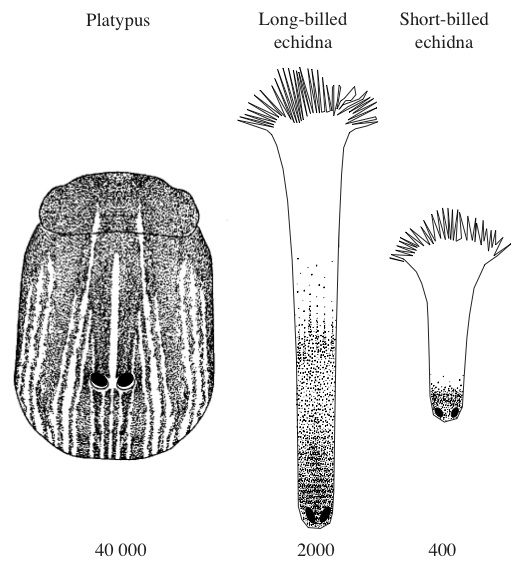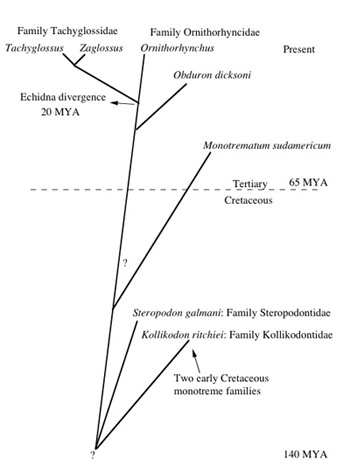Electroreception in Platypus (Ornithorhynchus anatinus)
Biology 342 Fall 2010
Author:
Emily Fong
| Home | Phylogeny | Ontogeny | Mechanism | Adaptative Value | References | Course Home |
Phylogeny

Platypus are part of the order Monotremata, and all three extant monotreme species have electroreception. These species include the long-billed echidna Zagglossus bruijnii, the short-billed echidna Tachyglossus aculeatus, and the platypus (see Figure 2). Of the three, the platypus has 40,000 mucous gland electroreceptors in the bill skin, compared to the 2000 electroreceptors of the long-billed echidna and 400 electroreceptors of the short-billed echidna, and therefore has the most sensitive sense of electroreception (Pettigrew, 1999). Though it has been demonstrated that echidnas are able to sense weak electric fields, this disparity in electroreceptor number suggests the drastic reduction in the electroreceptive abilities in echidnas is the result of evolutionary selection, due to its unsuitability to their environments (Proske et al., 1998). This is particularly true in the case of the short-billed echidna, whose electroreceptive abilities seem to be an artifact, with little applicability to hunting in the dry habitat they live in.

Figure 3. Pylogeny of monotremes, Pettigrew (1999)
In line with these conclusions, fossil and molecular evidence suggests that echidna are highly modified, recent offshoots from the main monotreme line, which seems to have been a variant of the platypus (see Figure 3). Molecular phylogeny shows that echidnas have branched off the monotreme line very recently, with an estimated divergence of 20 to 30 million years ago (Pettigrew, 1999).